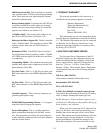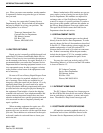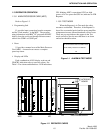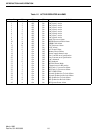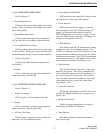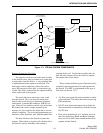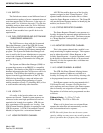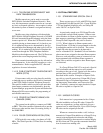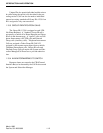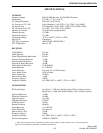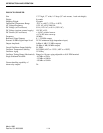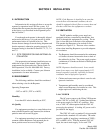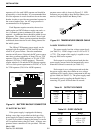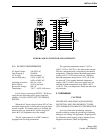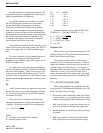
INTRODUCTION AND OPERATION
1-11
March 1999
Part No. 001-2009-600
1.14.11 TELEPHONE INTERCONNECT AND
DATA TRANSMISSION
Mobile transceivers can be used to access the
PSTN (Public Switched Telephone Network). How-
ever, this interconnect operation must be on a second-
ary basis to dispatch operation. An exception is when
the trunked system or channel is assigned exclusively
to one user.
Mobiles may place telephone calls through the
PSTN (Public Switch Telephone Network) or a PABX
(Private Automatic Branch Exchange) using the Inter-
connect special call. When the Call Processor detects
a mobile placing an interconnect call, it checks to see
if it is authorized that service determined by the Sys-
tem and Subscriber Manager and what type of call it is
making. If it is authorized, the Switch completes the
connection through the TIM (Telephone Interface
Module) to the telephone network. The Call Processor
performs the record keeping needed for billing.
Data transmission and paging are also allowed on
these frequencies. It also must be secondary to voice
communication. Refer to applicable FCC rules and
regulations for more information.
1.14.12 PUBLIC SWITCHED TELEPHONE NET-
WORK (PSTN)
If interconnect calls are to be placed by mobiles
or landside users to mobiles, the Switch is connected
to the PSTN (Public Switched Telephone Network).
The specific mobiles which can place calls and other
interconnect parameters are determined by how the
System Manager programs the System and Subscriber
Manager/Call Processor and by the programming of
each mobile transceiver.
1.14.13 PRIVATE AUTOMATIC BRANCH EX-
CHANGE (PABX)
The system has the ability to connect to a PABX
or PBX. This allows mobile originated calls to use the
dial access codes and the least cost routing facility of
the PABX/PBX.
1.14.14 PULSE CODE MODULATION (PCM)
PCM typically runs on the voice buses at 2.048
MHz. The Switch provides 32-Time Slots for sending
of audio.
1.15 LTR-Net FEATURES
1.15.1 STANDARD AND SPECIAL CALLS
There are two types of calls with LTR-Net signal-
ing; Standard Calls and Special Calls. Group ID codes
1-239 are Standard (dispatch) calls, and Group ID
codes 240-247 are Special Calls.
As previously stated, up to 239 Group ID codes
are assignable on each Home repeater. When a trans-
ceiver monitors its Home or Status repeater, it receives
data messages containing a Home repeater number,
Group ID, and Unique ID code (refer to Section
1.15.2). When it detects its Home repeater and a
Group ID from 1-239 that it is programmed to decode,
it unsquelches and the call is received. The correct
Unique ID code does not need to be detected to
receive a Standard Call. Standard Calls are limited to
other transceivers assigned to the same Home repeater.
However, each selectable system of a transceiver can
be programmed with a different Home repeater to
allow calls to mobiles assigned to other Home repeat-
ers if desired.
If a Group ID from 240-247 is received, a Special
Call is indicated and the transceiver will respond
according to the type of call. Special calls are used to
perform many of the special LTR-Net features
described in this section. Examples of Special Calls
are calls to a specific transceiver (Unique ID), Group
(Directed Group) or Telephone Interconnect. Others
are Interrogate, Interconnect, and Transceiver Dis-
able. Generally, a transceiver must decode its Unique
ID code to respond to a Special Call.
1.15.2 UNIQUE ID CODES
Each transceiver is programmed with a Unique
ID code in addition to Group ID codes. Unique ID
codes are assigned on a system-wide basis, not on a
repeater basis as with Group IDs. Up to 65504 Unique
ID codes can be assigned per Switch.
Whenever a transceiver makes a call, it always
transmits its Unique ID in addition to a Group ID. Any
control point equipped with a decoder and display
capable of listening to that transceiver can then display
the ID of that unit. This provides automatic identifica-
tion of transceivers making calls.



